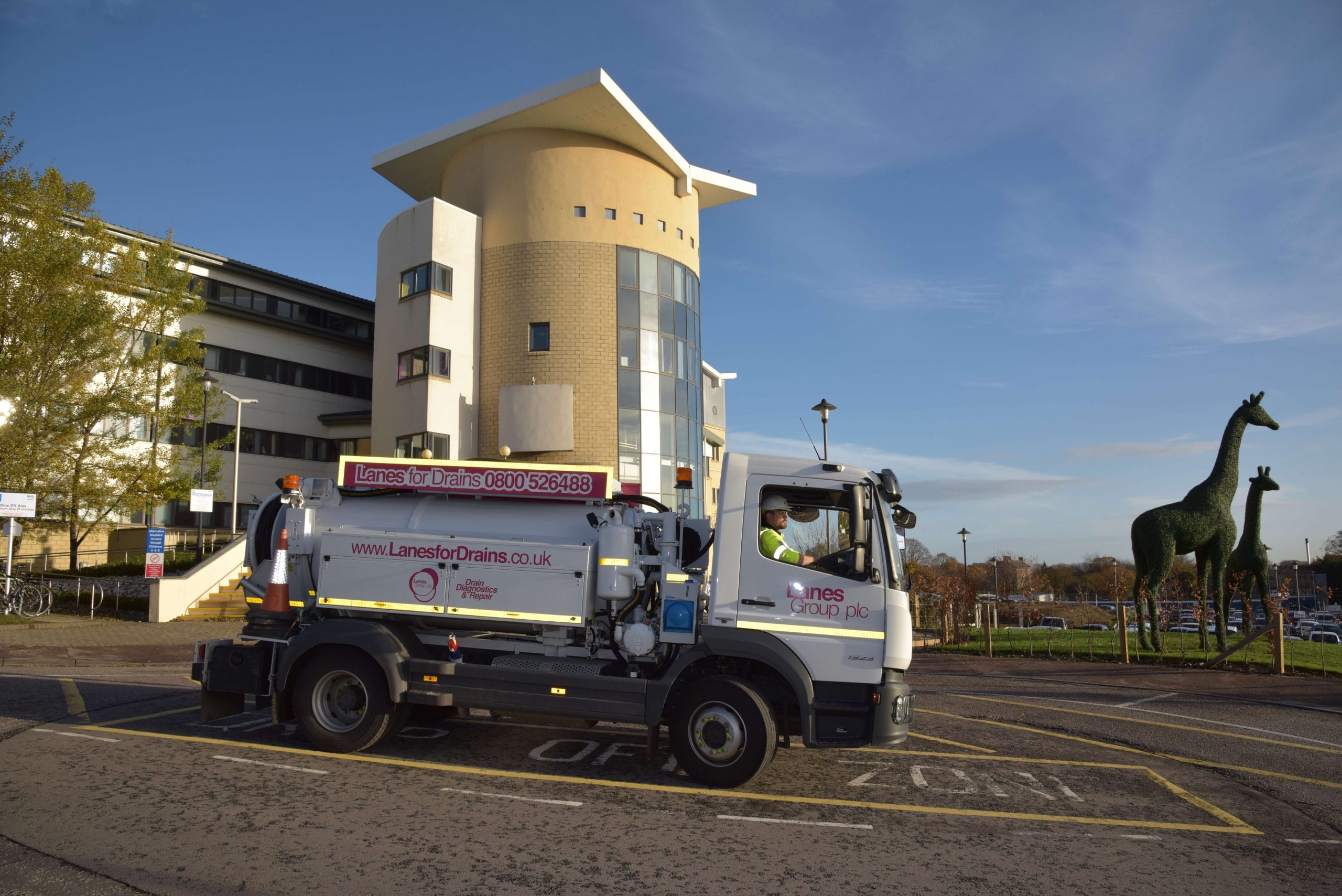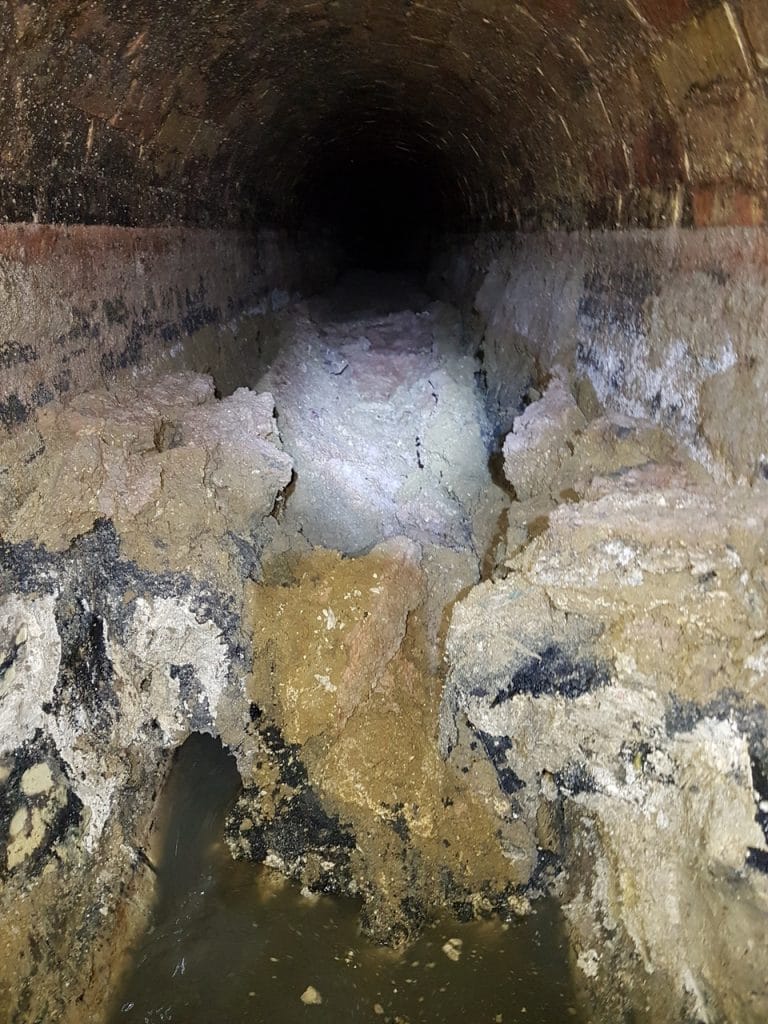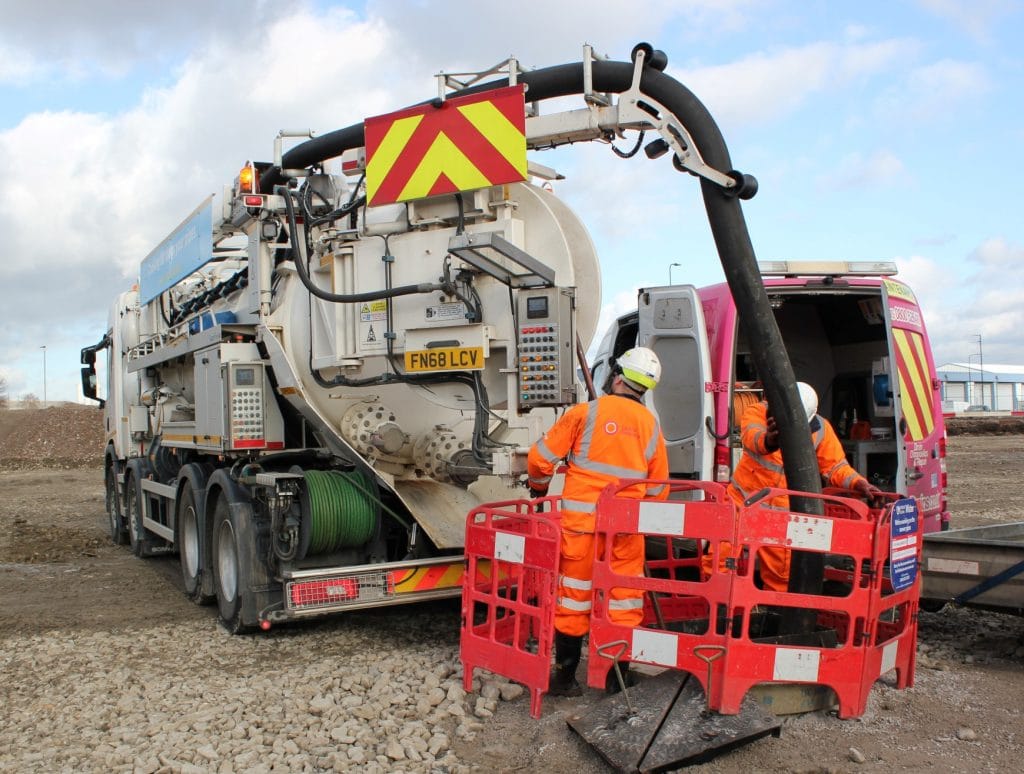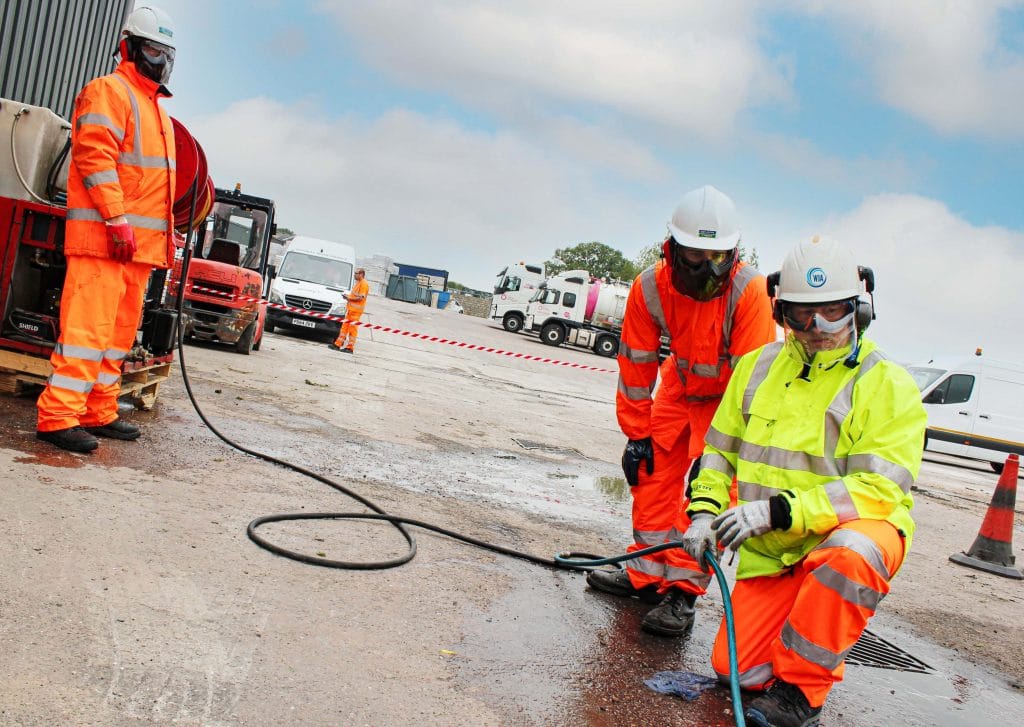Water jetting – the secret to city living

Across Europe, most people take their urban sewer systems for granted. But without water jetting, city living would not be possible, says Darren Hamilton, training and safety chairman at the Water Jetting Association.
…………….
Water jetting supports two vital cleaning and hygiene activities in urban environments – sewer cleaning and pressure washing.
Of course, other high pressure and ultra-high pressure water jetting activities take place in towns and cities, for example hydrodemolition of concrete structures.
But, for the sake of this article, I am focusing first on sewer cleaning then pressure washing.
It is fair to say that, without high pressure water jetting, our urban sewer system would grind to a halt.
Pipe blockage, alone, would soon make the system unserviceable. Our ability to live the lives we are used to, in modern western societies, would grind to a halt too.
The companies and agencies that deliver these services face many challenges – technical, organisational, environmental, and societal.
One thing that does not change, however, is that water jetting is at the heart of all solutions.
Wet wipe monsters
My perspective comes from working for Lanes Group plc, a national drainage and wastewater specialist, and a member of the Water Jetting Association.
Its experiences are mirrored across the UK industry. One of the biggest technical challenges in the last decade has been the use and abuse of disposal wipes and a growing array of other disposable sanitary and personal hygiene products.
Almost all of the wet wipes sold in the UK every year contain or are 100% plastic – and many millions of them are wrongly flushed down toilets.
This results in wet wipes contributing to 93% of sewer blockages in the UK. Wet wipes are, indeed, the monsters lurking in our urban sewers.

The UK’s Water Research Centre has found that they act like binding agents, helping to fuse other matter, notably fats, oils, and grease (FOG) into a solid mass that is hard to dislodge from pipes.
Plastic fragments from wipes make their way through the water treatment system and out into waterways and oceans, adding to plastic pollution.
Water companies are spending more and more time trying to persuade people not to flush wet wipes. A UK Member of Parliament, Fleur Anderson, has proposed a new law to ban plastic wipes.
For the last three years, Lanes has contributed to the campaign against wipe abuse and FOG, which can combine to create giant fatbergs, with its Unblocktober campaign.
Saving sewers and oceans
This is the world’s first annual participation event aimed at encouraging people to change their behaviour over the use of wipes and disposal of FOG.
The aim – to protect sewers (and the drainage engineers who have to clean up the mess) and oceans from blockages and plastic pollution, so our utility services run more smoothly and the environment is better protected.
Unblocktober has reached hundreds of thousands of people, has encourages tens of thousands of them to change their behaviour and is backed by hundreds of companies and agencies.
And this year, it sponsored the European FOG Summit, a gathering of 150 water utility leaders in Brighton, UK, who are collectively looking at new ways to tackle this serious environmental problem.
Water jet technology
While this work continues, drainage companies are deploying ever more sophisticated specialist water jetting vehicles to tackle sewer blockages.
They can broadly be broken down into small, medium and large types.
At the small end, there is the van pack, a van with a water jetting pump and hose reel, as well as CCTV survey equipment.
These generally operate at 207 bar (3,000 psi), with water flows of 45 litres per minute (lpm) or 10 gallons per minute (gpm) to clean and unblock drains with diameters up to 150mm.
Next in line is small jet vac tanker, for example a CityFlex. These compact vehicles are designed for urban environments. Ours operate at pressures of 170 bar (2,500 psi) and flow rates of up to 118 lpm (26 gpm). They work on sewers with diameters up to 375mm.

Finally, large jet vac tankers operate at the same pressure but can deliver flow rates of up to 410 lpm (91 gpm). They are deployed on pipes with diameters up to 1800mm.
Recycler jet vac tankers are also increasingly common in the UK. These can filter and reuse water, reducing the amount of water needed to complete jetting tasks and increasing productivity by 60%.
For the toughest jobs, for example the growing problem of concrete blockages in urban sewers, contractors deploy even more powerful jet vac tankers, commonly operating at 827 bar or 12,000 psi.
Coping with climate change
Climate change is also changing the way we deploy many of these assets, to counter the very serious effects of sudden and very powerful downpours of rain as weather becomes more volatile.
For example, for Thames Water, the UK’s largest water company, Lanes is responsible for delivering the UK’s most ambitious planned sewer cleaning programme.
For 2021/22, Lanes has committed to cleaning 2,000km of sewers, most in urban areas, equivalent to a sewer pipe from London to Rome (and a few kilometres past it).
Sewers that need cleaning are selected using a computer model developed by Thames Water which builds in historical weather patterns and future changes caused by climate change.
Encouraging competence
Another key concern is skills shortages and the need to have a motivated and stable workforce that can operate all this advanced water jetting equipment, and other processes, for example CCTV surveying.
Training is a key component of an effective response to this challenge. The WJA’s City & Guilds-accredited water jetting training is used by almost all drainage contractors in the UK.
It is founded on our two Codes of Practice, the ‘Blue Code’ for high and ultra-high pressure water jetting and the ‘Red Code’ for sewer jetting.

Each operative must complete the WJA Safety Awareness course and then a practical module, in this case the Drain and Sewer course, to qualify for their WJA card.
The WJA has now gone an important step further to support competent water jetting in industries where water jetting is essential.
Our new Level 2 Water Jetting Technician course is accredited by ABBE and is the UK’s first competency qualification for water jetting.
To achieve it, an operative must first pass the WJA Safety Awareness course and two practical modules, one of which must be Surface Preparation.
They must then undertake at least 122 hours of guided workplace assessment, including completing a detailed workbook, supervised by a WJA-approved assessor.
This workplace element represents 60% of the course content. We estimate it will take at least a year to complete all elements. Successful operatives receive a qualification for life, as long as they pass a two-part refresher course every three years.
We see the Level 2 Water Jetting Technician course as providing water jetting contractors with several key advantages.
It supports safe and productive water jetting. It supports effective skills transfer. It helps reward and retain key personnel, acting as a rung on a careers ladder that supports succession planning.
Also, it supports commercial success through enhancing reputation and trust.
Pressure on safety
The other key element of urban water jetting, as mentioned, is pressure washing. Use of pressure washers has grown rapidly over the last 20 years.
They are used to remove graffiti from buildings. Pressure washers are used for cleaning vehicles, machinery, paths, and drives, especially to remove chewing gum. Many systems also combine pressure with steam.
They have become so common, that many people are not aware of the risks involved in using them.
We define low pressure (pressure washing) cleaning as being below 207 bar, or 3,000 psi. That is still equipment that has the power to cause life-changing and even fatal injury.
Yet most pressure washing is carried out by people who are not wearing the correct PPE or following procedures that are most likely to keep them, and those around them, safe.
The WJA is addressing this by producing a new code of practice specifically for pressure washing. We already offer a City & Guilds-accredited pressure washing course.
The code of practice includes sections on training and competency, site and equipment set-up, and the different types of pressure washing pumps and equipment. This includes hot water systems which introduce additional risks, as shown above.
Also covered is equipment operation, use of personal protective equipment, managing the pressure washing team and how to respond to injuries. There is detailed advice on risk assessment and a pre-start checklist, as well.
The pressure washing code practice also includes the WJA’s new water jetting medical guidelines.
They were created following research into water jetting injuries commissioned by the WJA and carried out by a team of leading trauma doctors working for the UK’s National Health Service.
The guidelines are in the form of an algorithm, giving clear step-by-step information about how to respond to water jetting injuries from the moment they occur through to post-emergency treatment therapies.
We hope the new Pressure Washing Code of Practice will be taken up by contractors and recognised by end-use customers and regulators to establish new and higher standards for pressure washing in the UK.
The WJA is keen to promote this professional and knowledge-based approach to delivering pressure washing services. We welcome pressure washing contractors and organisations that carry out pressure washing in-house as WJA members. We also value the lead they take in promoting safety in their industry.
They include TPC Brickwork Cleaning, in Southampton, Hampshire. Company owner Kris Jasinksi, says: “We’re a member of the WJA because we want to protect our operatives and everyone around us when we’re pressure washing.
“Undertaking the WJA pressure washing training has made a big difference. I can see our safety has gone up a level. The advice the WJA gives is central to how we go about our work and to our business success. I have no doubt about that.”
More to do to embed best practice
Water jetting is vital to our ability to maintain key urban assets. It remains a highly sustainable method for cleaning sewers and much of our build environment.
However, there is still much work to be done to embed best practice in its use, in a way that maximises safety and operational effectiveness, for the good of the operative, the contractor, the customer and the wider public.
